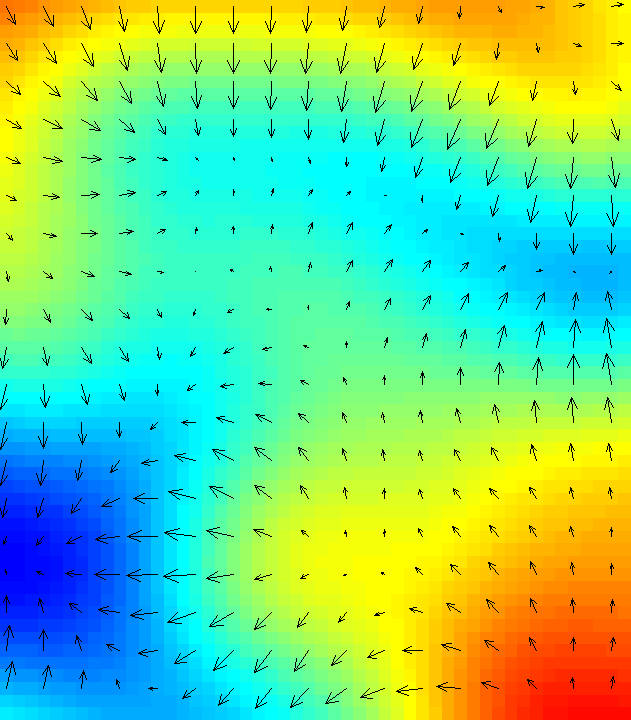Meteorology: Difference between revisions
Jump to navigation
Jump to search
(→Meteorology: v.vol.rst tut) |
(+ d.rast.arrow screenshot) |
||
| Line 9: | Line 9: | ||
* Work in progress: ''d.barb'': Displays wind barbs or variable length straw diagrams given either two raster maps, or vector point data. Like {{cmd|d.rast.arrow}}, input data is given as magnitude and direction. (Hamish) | * Work in progress: ''d.barb'': Displays wind barbs or variable length straw diagrams given either two raster maps, or vector point data. Like {{cmd|d.rast.arrow}}, input data is given as magnitude and direction. (Hamish) | ||
[[Image:D_rast_arrow_magnitude.png|thumb|right|200px|d.rast.arrow at work]] | |||
* {{cmd|r.in.gdal}} - useful for importing raster data from [http://www.gdal.org/formats_list.html very many source data formats]. | * {{cmd|r.in.gdal}} - useful for importing raster data from [http://www.gdal.org/formats_list.html very many source data formats]. | ||
Revision as of 20:03, 15 April 2010
Meteorology
GRASS used together with R-stats provides a powerful toolset to analyse meteorological time series and to perform spatio-temporal interpolation.
- Weather symbols to use with GRASS display and cartography modules
- Work in progress: d.barb: Displays wind barbs or variable length straw diagrams given either two raster maps, or vector point data. Like d.rast.arrow, input data is given as magnitude and direction. (Hamish)

- r.in.gdal - useful for importing raster data from very many source data formats.
- r.series - useful for time series analysis of raster data.
- v.surf.rst - useful for 2D spline interpolation between sparse data points.
- v.vol.rst - useful for 3D spline interpolation between sparse data points. See the Slovakia 3D precipitation voxel isosurfaces screenshot on the visualization screenshots page. Tutorial can be found in the GRASS book 2nd Ed., chapter 7.